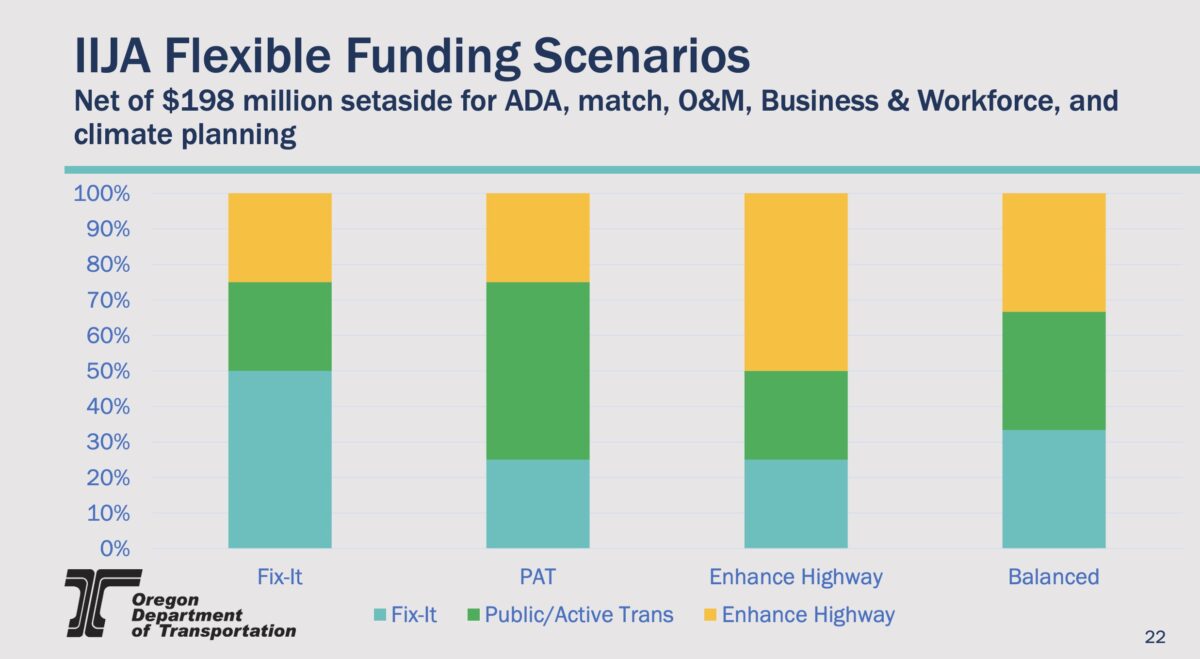
The race to influence over $400 million in new transportation funding coming into Oregon over the next five years has begun in earnest.
“I’m concerned that all four scenarios support the expansion of fossil fuel infrastructure.”
— Khanh Pham, Oregon State Rep
At the Oregon Transportation Commission (OTC) meeting today, Oregon Department of Transportation staff will lay out four potential funding scenarios they feel will maximize impact of Biden’s Infrastructure Investment and Jobs Act (IIJA). Oregon will receive about $1.2 billion total from IIJA. More than half is already dedicated to specific programs like bridges and EV charging infrastructure. The big lobbying effort will be over the $412 million that will be completely “flexible”, meaning it comes without legal constraints to be spent on “highways” or any other particular type of infrastructure.
Partly because of that, a coalition of seven advocacy groups has made it clear they reject all four of ODOT’s scenarios. In a letter sent to the OTC Wednesday, leaders from Oregon Environmental Council, 1000 Friends of Oregon, The Street Trust, No More Freeways, Verde, Climate Solutions, BikeLoud PDX said “We are concerned that none of these scenario’s [sic] meaningfully direct resources towards tackling Oregon’s greatest overlapping challenges.”
The advocates already have one powerful ally: State Representative and Joint Transportation Committee Member Khanh Pham. In testimony in advance of today’s meeting, Rep. Pham said, “I’m concerned that all four scenarios support the expansion of fossil fuel infrastructure, and will increase greenhouse gas emissions completely counter to the Governor’s Executive Order requiring all state agencies including ODOT to reduce greenhouse gas emissions.”
In a process similar to the one they held to allocate funds in the most recent Statewide Transportation Improvement Plan, ODOT has identified nine different funding categories and their four scenarios divide the $412 million into each category.
Advertisement
The categories are: Great Streets (a new category that focuses on orphan highway arterials), Safe Routes to School, Fix-It, Enhance Highway, Local Climate Planning, Americans with Disabilities Act Curb Ramps, Business and Workforce Development, Match for US DOT Competitive Grants, and Operations and Maintenance.
Here are the outlines and graphics to explain each of the four scenarios:
Scenario 1 – Fix-It: This scenario focuses on providing resources to preserve existing state highways, dedicating half of the remaining flexible funding to Fix-It programs while splitting the remaining funding between Enhance Highway and Public and Active Transportation (Great Streets and Safe Routes to School).
Scenario 2 – Public and Active Transportation: This scenario dedicates half of the remaining flexible funding to the Great Streets and Safe Routes to School programs while giving a quarter each to Enhance Highway and Fix-It.
Scenario 3 – Enhance Highway: This scenario dedicates about half of the remaining flexible funding to Enhance Highway programs; Fix-It and Public and Active Transportation each get about a quarter of funding.
Scenario 4 – Balanced: Each of the three categories receives about a third of the remaining funding in this scenario.
The advocacy coalition that includes several Portland-based transportation groups, agrees with Rep Pham and doesn’t like any of these. They say ODOT still wants to dedicate too much money to existing, car-centric highway programs that can be funded from other sources. “This federal money, which does not come with the Highway Trust Fund limitations, should be targeted at the kinds of projects that ODOT has not reliably prioritized,” their letter states. The coalition also says ODOT’s scenarios fall short on creating positive benefits for adjacent communities and jobs.
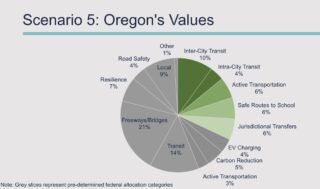
“This is not the moment to keep shoring up the status quo.”
Their Scenario 5 (right), dubbed “Oregon’s Values”, would invest all the funding in active and public transportation, including many of the kinds of investments described in the proposed scenarios under the Great Streets, Local Climate Planning, and Safe Routes to School categories while showing a “demonstrable priority” on vulnerable road users.
This coalition is far from the only voice that’s already organized to influence how this money is spent. OTC members also heard from many mayors and other elected officials from around the state at their meeting today. Some of them want interchanges widened and freeways upgraded. Others voiced strong opposition to ODOT’s plan to toll I-205 and want the agency to use some of the IIJA funds to fill freeway project budget gaps instead.
From here, ODOT will refine their scenarios over the next few weeks and open a public comment period in February. The OTC will take up the subject in more detail at their February 17th meeting and will approve the funding allocation at the end of March.



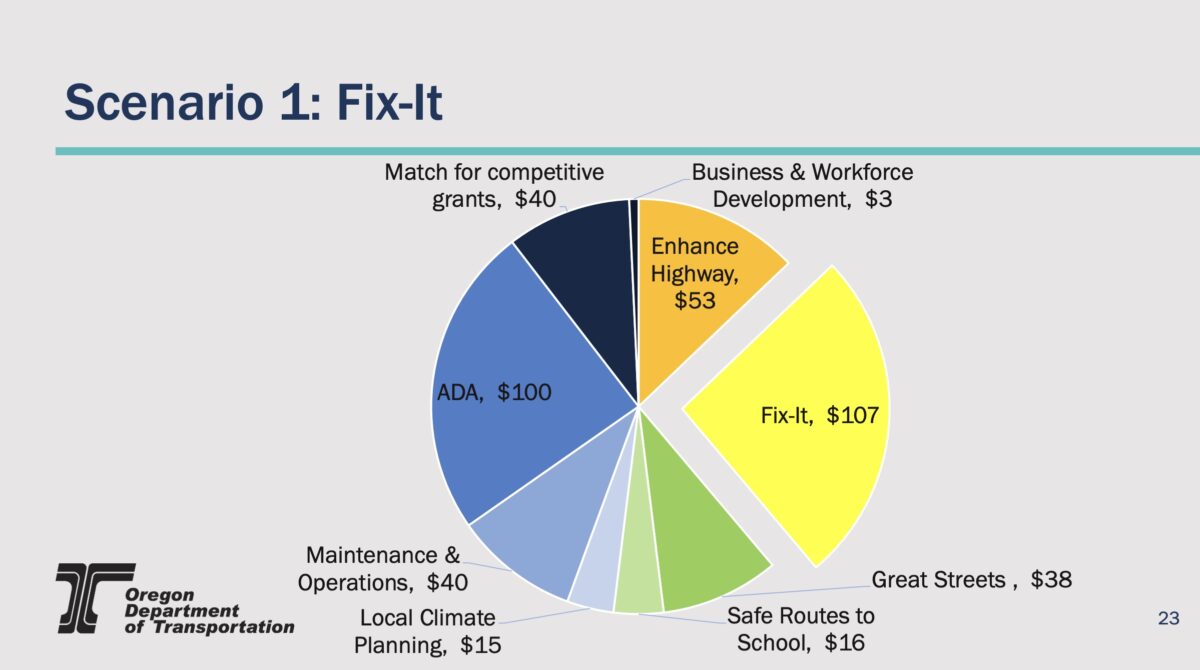


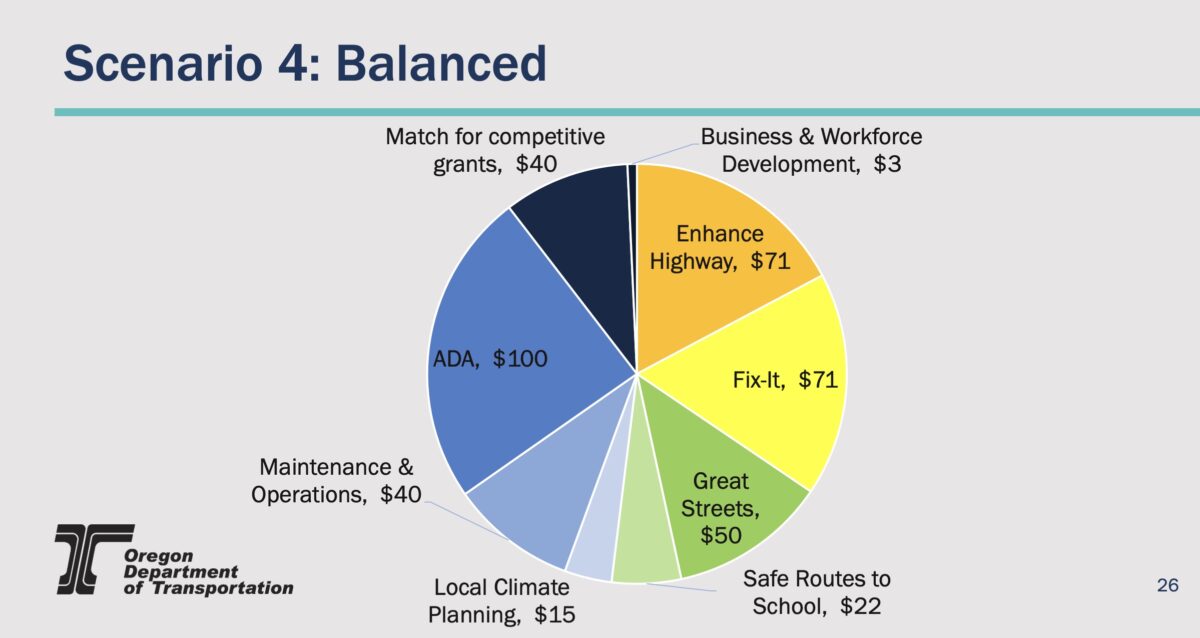
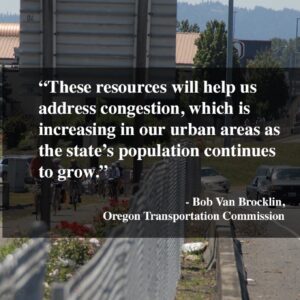
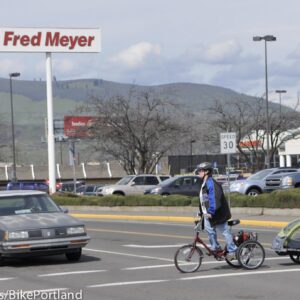


Thanks for reading.
BikePortland has served this community with independent community journalism since 2005. We rely on subscriptions from readers like you to survive. Your financial support is vital in keeping this valuable resource alive and well.
Please subscribe today to strengthen and expand our work.
Someone probably spent a whole day making a slide that says “we can spend most of it on this or that, or spread it out even.” Fascinating analysis by ODOT.
Every time ODOT funding comes up, I will continue to remind folks that ODOT’s song and dance is to say “look at how much we are not spending on highways” through the STIP and other processes. Most of the highway expansion money was put into ear marks in bills like HB2017 (which was really good and provided more transit funding). They are actually spending a ton of money on highway expansion, but they don’t have to show it on their graphs when they’re talking about funding allocations.
ODOT should not be making its budget based on wishful thinking. Public transit ridership is not going to recover to pre-pandemic levels and car ownership is continuing its upward march.
Wishful thinking is to imagine that kind of trend is sustainable. Wouldn’t you agree?